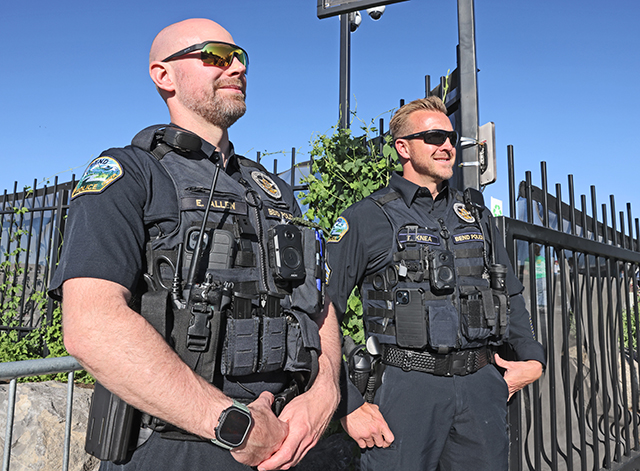Deadbolt technology sees your fingerprint
Published 5:00 am Tuesday, October 21, 2008

- Your finger’s the key with Kwikset’s SmartScan deadbolt lock.
You know, people don’t take enough time to sit outside alone and just think. Listen to the birds. Feel the wind on their faces. Wonder when their spouses are coming home to unlock the door.
Last week, I locked myself out of the house. For four hours I waited, in damp, 90-degree heat that fused my unmentionables to places even more unmentionable. In houses past, this wouldn’t have been a problem. I would have shimmied through an unlocked window or figured out some other form of self-burglary. However, our current dwelling is like a residential Fort Knox, with automatic lights, window and door alarms, motion sensors and 911 on the security system’s speed dial. I couldn’t get in.
The beauty of Kwikset’s SmartScan deadbolt lock — which reads fingerprints using the emerging technology of biometrics — is that you can always get in the house, unless you somehow forget your finger.
Just like the movies
The principles of biometrics are familiar to any fifth-grader who has watched a James Bond movie. The technology scans and measures a unique biological feature — fingerprint, palm print, retinal or iris pattern — and compares it with a sample on file using fancy mathematics. If the scan and the record on file match, voila — you have access to the evil genius’ computer core, or whatever.
Fingerprint scanning is now commonplace; you can buy a fingerprint-lock USB device for your computer for less than $50.
The technology was fairly hackable in the past. The guys on the Discovery Channel show “MythBusters” unlocked a device using the Xerox of a fingerprint, and some enterprising Japanese hacker replicated a finger using Gummi bears.
But now, fingerprint scanning is a pretty robust and reliable form of security. The Kwikset lock, for instance, looks below the surface of the skin using radio frequency scanning, picking up landmarks of your subdermal print. That means your finger doesn’t have to be perfectly clean or dry for the lock to work. As the father of 1-year-old twins, I find my fingers rarely are clean or dry.
Also, the lock will not operate if the finger in question has been separated from its owner. This addresses my first concern about this technology — that a routine burglary might escalate into a digit-removing nightmare and one of the unlikeliest demands ever uttered: “Give me the finger!”
“If you don’t have a live person, it’s not going to work,” Kwikset spokesman Eric Lundquist said. I only hope this fact is well known in the home-invasion industry.
The SmartScan deadbolt retails for about $200; however, at a Home Depot in Los Angeles two weeks ago, the devices had been put on clearance for $149. I asked Lundquist about the lock being put in the discount bin. “It appeals to a demographic that would spend $200 on a lock, when you can get a deadbolt for $25,” Lundquist said. Apparently, said demographic doesn’t include DIYers.
Installation was easy. No external wiring is required; the device uses four AA batteries, which Kwikset says will last for more than a year of heavy use. I removed the old deadbolt, assembled the device in the door and zapped in five screws. Programming the lock was easy, although it took a couple tries to register my index finger as the “administrator.” Among the SmartScan features are the ability to hold up to 50 fingerprints and to restrict access for some people — housekeepers, nannies, caregivers — to certain times of the day and week.
But, clearly, and, I think, indisputably, this technology is directed at aging boomers whose minds are increasingly slipping their neural gears.
Think about it: The SmartScan lock effectively does no more than one of those decorative rocks you can hide a key in (and decorative rocks are a lot cheaper). This is a product for people so addled that they can’t remember in which rock they hid the key.






